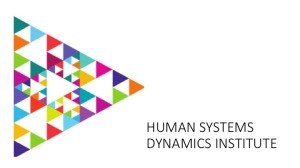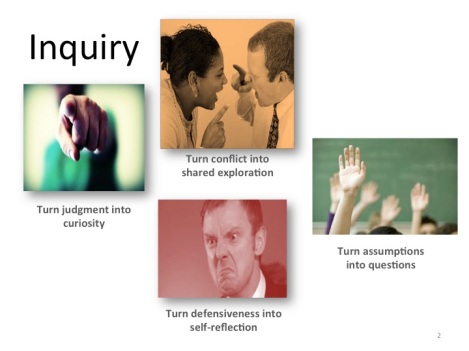Last week, as I was pulling weeds in my flowerbeds (as always, amazed by the tenacity of dandelions and crab grass), I reached under a shrub to pull a particularly stubborn root. I felt a sting and drew back my hand to see dozens of fire ants scatter. I had disturbed their mound, and the ground wa s alive with tiny workers scrambling to rebuild their fortress. Somehow, those many individual ants worked as one in response to the disaster. Although it looked like chaos to me, these ants were synchronizing their actions to respond to a huge change in their environment. Together, they instantly adapted when their home was destroyed, and, I’m sure, will sustain a healthy system either there or somewhere else in my flowerbed. I will adapt, too, by looking more closely next time I reach under those shrubs.
s alive with tiny workers scrambling to rebuild their fortress. Somehow, those many individual ants worked as one in response to the disaster. Although it looked like chaos to me, these ants were synchronizing their actions to respond to a huge change in their environment. Together, they instantly adapted when their home was destroyed, and, I’m sure, will sustain a healthy system either there or somewhere else in my flowerbed. I will adapt, too, by looking more closely next time I reach under those shrubs.
That is “adaptive capacity” in action. We think of adaptive capacity as individual and collective learning in response to changes within and outside the system—learning that shows resilience and supports sustainability. That working tangle of ants in my flowerbed provides a powerful metaphor for adaptive capacity in professional development systems.
As a leader of professional learning, I have spent years trying to help individual teachers think about their work, assess student learning, and develop more powerful teaching skills. I assumed that excellent teaching in each classroom would somehow improve student learning throughout the system. I never thought about whether improvement in these individuals contributed to the adaptation and responsiveness of the whole system.
I was wrong, and I should have known better. As early as 1972, Fullan and Loubser claimed that adaptive capacity . . .
involves the capacity of the system to attain its goals in the face of a variegated and changing environment. . . it also means that the system . . . has the capacity to change aspects of the environment in accordance with needs of the system, as well as to adapt to those aspects that it cannot change (p. 272).
Thirty-eight years later, Fullan was still writing about the power of response and adaptation as capacity-building:
. . . relentless development of what we call ‘capacity building’ – to make learning more exciting, more engaging, and more linked to assessment feedback loops around the achievement of higher order skills (which I have called the new average) – is the main agenda. (Fullan, 2011, p. 19).
In working toward “adaptive capacity,” we join forces with other researchers and practitioners, many of whom work in complex systems in the world outside schools. For example,
- Evolutionary biologists talk about the adaptive capacity of species (like the cockroach) to survive natural disasters and widespread extinction.
- Ecologists talk about the adaptive capacity of ecosystems (like wetlands) to rebound from natural and man-made disasters.
- Economists talk about the adaptive capacity of corporations (like Apple) to respond to changing markets.
- Policy-makers talk about the adaptive capacity of communities (like Ferguson, MO) to respond to violence and racial tension.
In schools, adaptive capacity can show up in many different ways:
- A class of fourth grade students notices bullying on the playground and decides to take action.
- After experimenting with project-based learning, three fifth grade teachers decide to develop a grant proposal to fund a field trip for the whole grade level.
- An entire faculty identifies patterns in student writing portfolios as the first step in planning a year-long focus on academic vocabulary across content areas.
- When the principal makes a presentation to the parent-teacher organization about students’ writing progress, the group agrees to fund a series of Saturday writing camps for students and their parents.
Imagine that all those instances are happening on the same campus. When that happens, we can be pretty sure that we are seeing adaptive capacity. Individuals and groups are seeing patterns in their work, making sense in terms of what they’d like to see, and taking action to make their system more sustainable, more resilient, and more supportive of individual and group learning. That’s adaptive capacity in action.
Here is my take-away as a leader of professional learning: When I work with a group of teachers, I should focus on particular skills sets, but I also have to remember the big picture and connect individual work to campus and district learning goals. Fullan said it this way:
The right drivers – capacity building, group work, instruction, and systemic solutions – are effective because they work directly on changing the culture of school systems (values, norms, skills, practices, relationships); by contrast the wrong drivers alter structure, procedures and other formal attributes of the system without reaching the internal substance of reform – and that is why they fail. (Fullan, 2011)
Adaptive capacity in schools—where everything should focus on learning–is about a culture where we see these patterns:
- Engagement (among students, educators, and other stakeholders)
- Sustainability (of systems improvement and student learning gains)
- Focus (on what really matters—student learning)
- Collaboration (among all stakeholders)
- Coherence (across instructional and administrative approaches)
- Risk-taking (inherent in taking an inquiry stance)
- Joyful practice (among all stakeholders)
As we have mentioned in previous blogs, in the field of human systems dynamics, we see evidence that articulating a set of “simple rules” can help build coherence around work and contributes to adaptive capacity. Think about this set of simple rules and how each of them might set conditions for adaptive capacity across the whole:
- See, understand, and influence patterns across our system.
- Recognize and build on assets of self and others.
- Teach and learn in every interaction.
- Look for the true and useful.
- Attend to the whole, the part, and the greater whole.
- Seek joy in learning.
- Act with courage.
In the schools and classrooms where I work, this list helps us work together build adaptive capacity in support of student learning.



